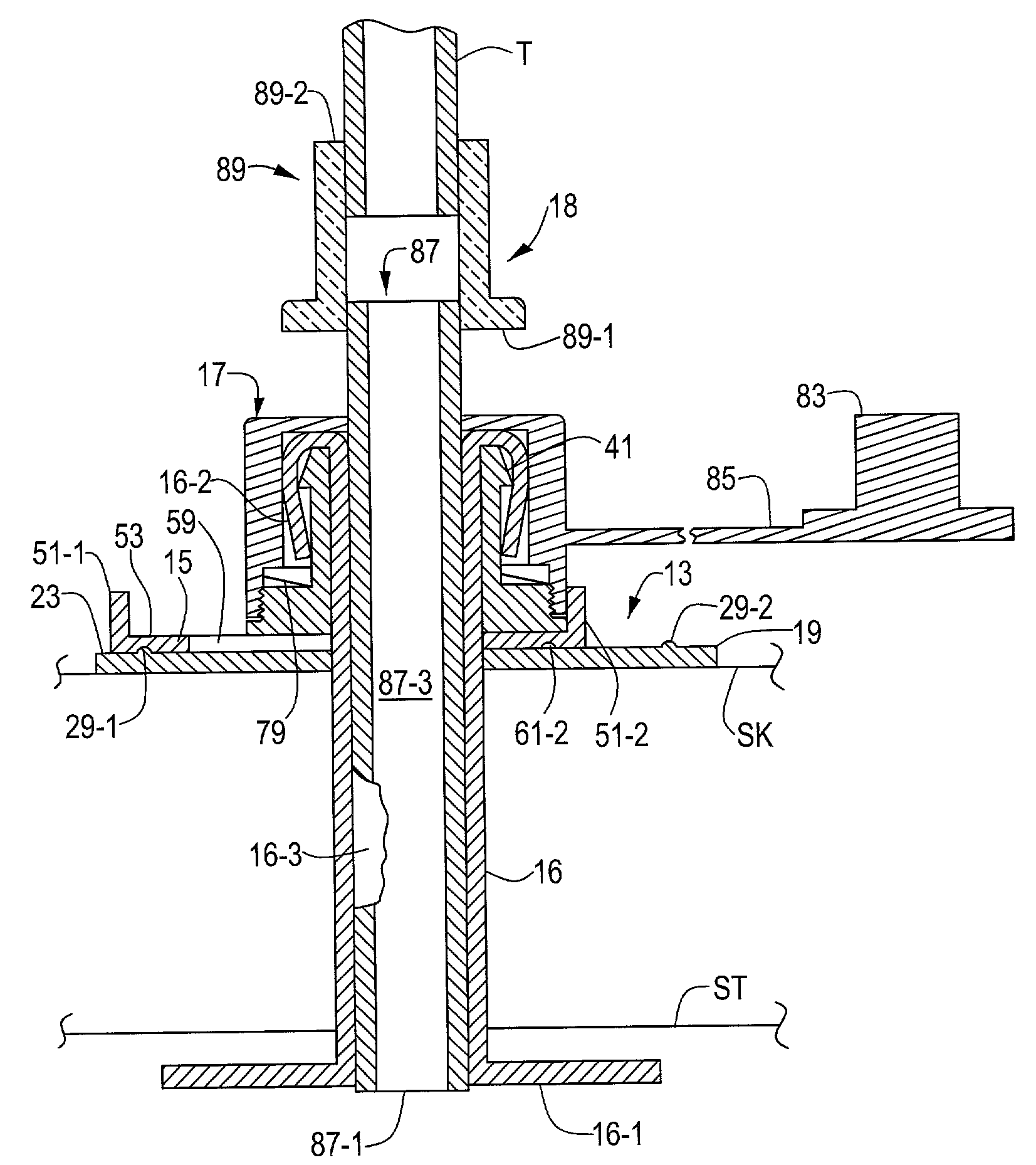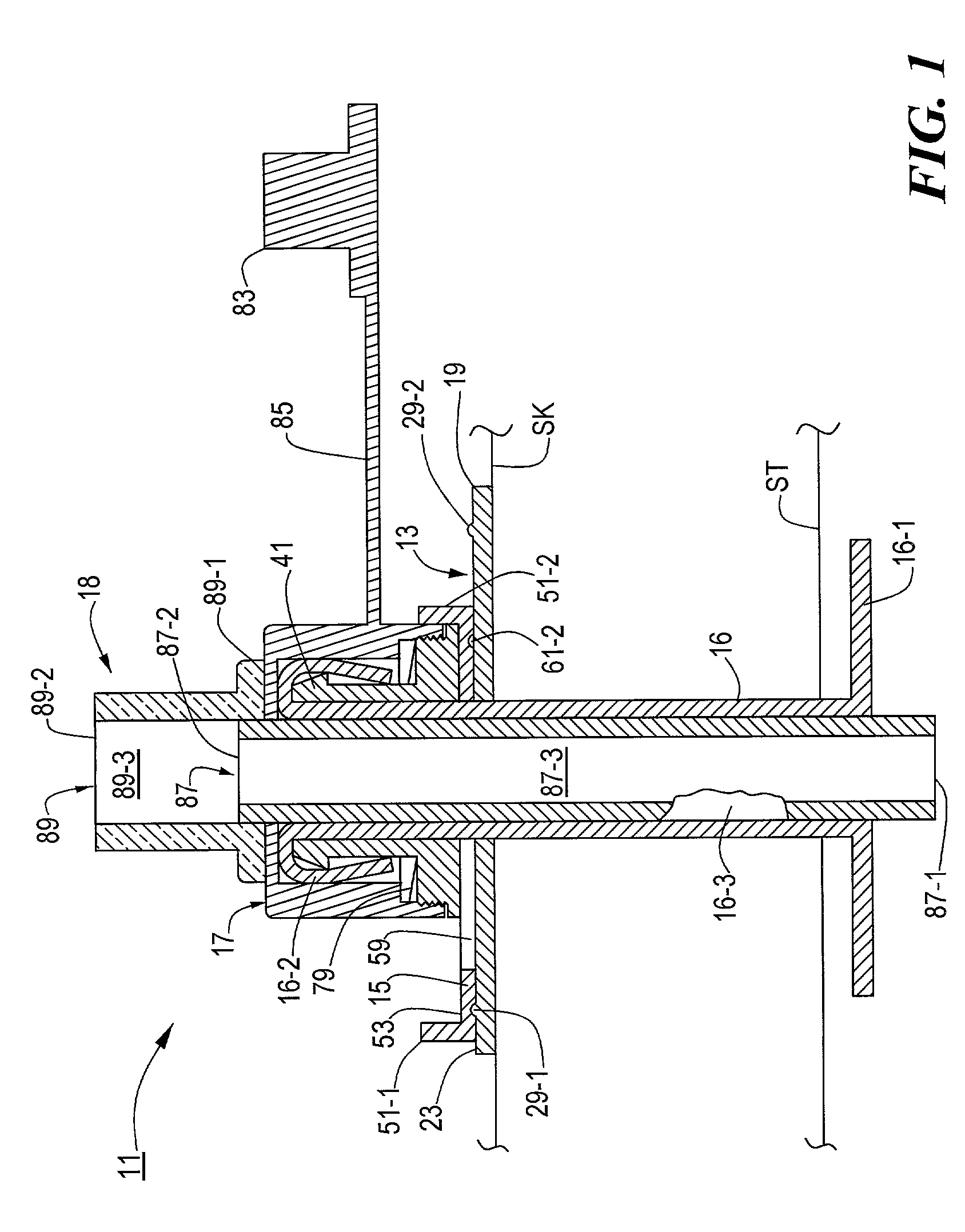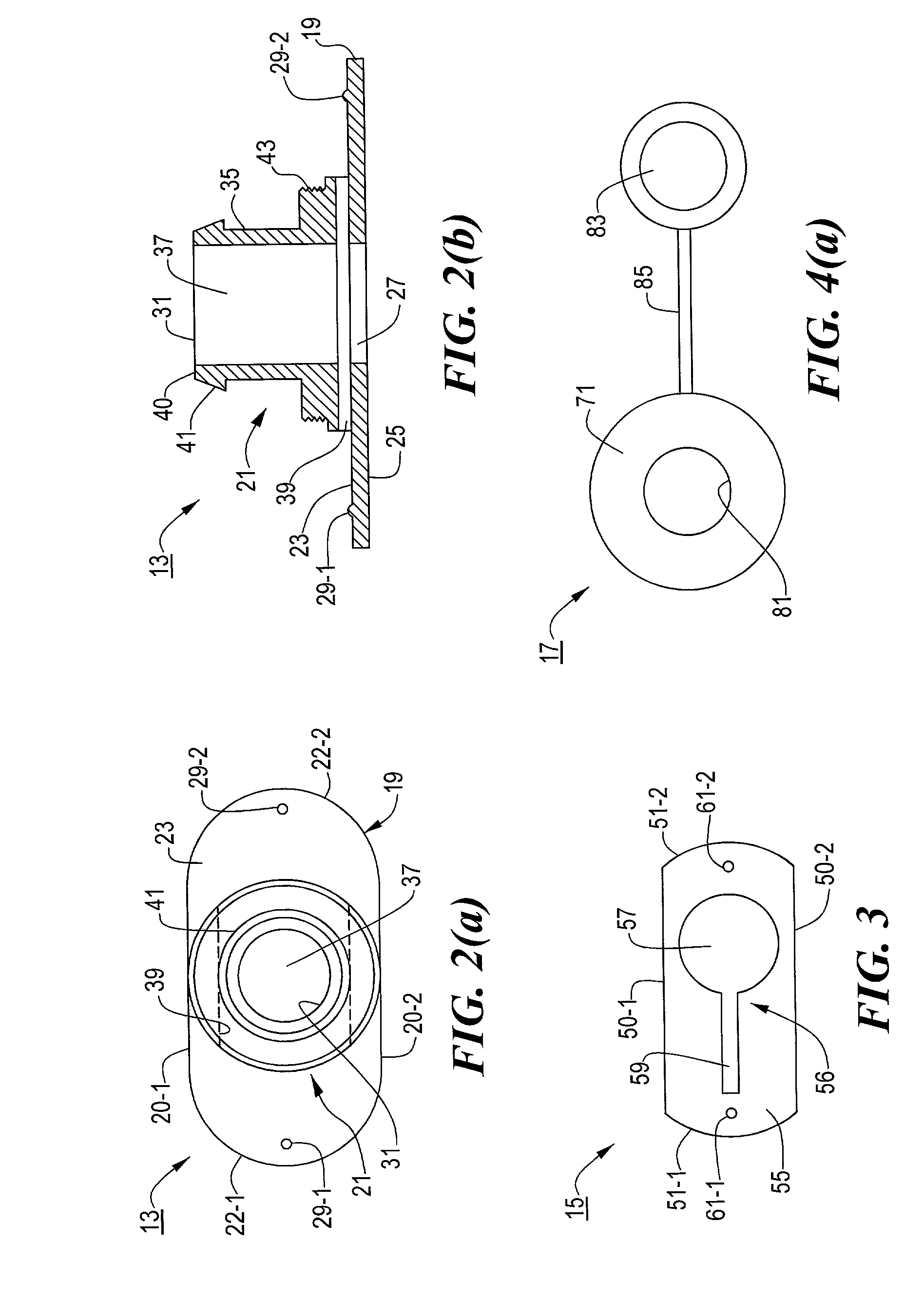Medical catheter assembly including a removable inner sleeve and method of using the same
a technology of medical catheters and inner sleeves, which is applied in the field of medical catheters, can solve the problems of unsuitable long-term use, nearly one foot length of tubing that extends externally, and is difficult to conceal, so as to increase the lifetime of the feeding tube and minimize the clogging of the feeding tub
- Summary
- Abstract
- Description
- Claims
- Application Information
AI Technical Summary
Benefits of technology
Problems solved by technology
Method used
Image
Examples
first embodiment
[0048]Referring now to FIG. 1, there is shown a section view, broken away in part, of a low profile medical catheter assembly constructed according to the teachings of the present invention, said low profile medical catheter assembly being represented generally by reference numeral 11.
[0049]Assembly 11, which is shown implanted in a patient as a low profile, convertible, percutaneous endoscopic gastrostomy (PEG) device, comprises a body 13, a clamp 15, a gastrostomy feeding tube 16, a cap 17, and an inner sleeve assembly 18.
[0050]Referring now to FIGS. 1, 2(a) and 2(b), body 13, which is a unitary structure preferably made of molded medical grade plastic, is shaped to include a base 19 and a sleeve 21. Base 19, which is appropriately sized to engage the skin SK of the patient surrounding a stoma tract so as to serve as an external bolster, is a quasi-rectangular member having a pair of straight sides 20-1 and 20-2, a pair of rounded ends 22-1 and 22-2, a top surface 23, a bottom sur...
second embodiment
[0074]Referring now to FIGS. 18 and 19, there are shown section views of a low profile medical catheter assembly constructed according to the teachings of the present invention, said low profile medical catheter assembly being represented generally by reference numeral 201.
[0075]Assembly 201 is similar in many respects to assembly 11, the principal differences between the two assemblies being that (i) assembly 201 does not include clamp 15, (ii) cap 17 is replaced with a cap 203, and (iii) inner sleeve assembly 18 is replaced with an inner sleeve assembly 205.
[0076]Cap 203, which is similar in many respects to cap 17, differs notably from cap 17 in that cap 203 further includes a collar 207 extending upwardly from top surface 71 and surrounding opening 81. A helical thread 209, whose purpose will become apparent below, is formed on the inside surface of collar 207.
[0077]Inner sleeve assembly 205, which is similar in certain respects to inner sleeve assembly 18, differs notably from ...
PUM
 Login to View More
Login to View More Abstract
Description
Claims
Application Information
 Login to View More
Login to View More - R&D
- Intellectual Property
- Life Sciences
- Materials
- Tech Scout
- Unparalleled Data Quality
- Higher Quality Content
- 60% Fewer Hallucinations
Browse by: Latest US Patents, China's latest patents, Technical Efficacy Thesaurus, Application Domain, Technology Topic, Popular Technical Reports.
© 2025 PatSnap. All rights reserved.Legal|Privacy policy|Modern Slavery Act Transparency Statement|Sitemap|About US| Contact US: help@patsnap.com



